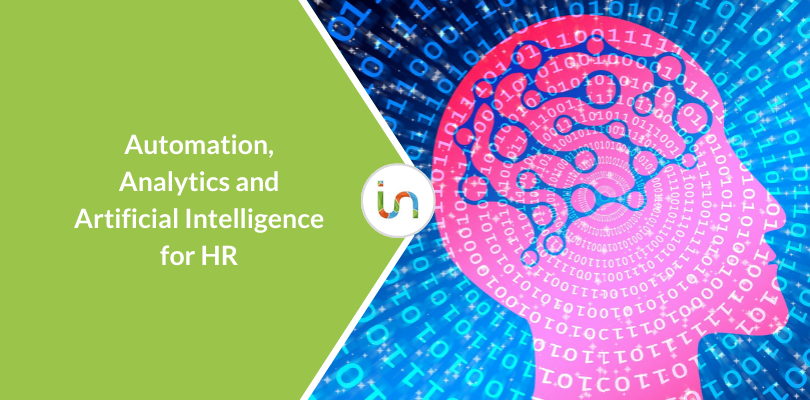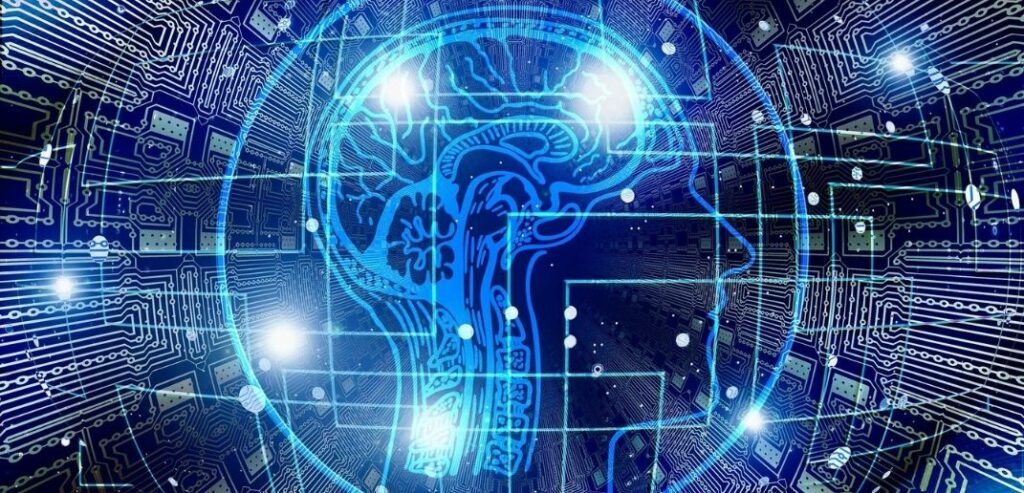
Automation, Analytics and Artificial Intelligence: why they matter for HR
That the world of HR is constantly evolving is something you’ll surely come to terms with every day. But what is this innovation all about? And what strategies can you deploy in this fourth quarter and in the coming year? When we talk about Automation, Analytics, Artificial Intelligence for HR what do we mean?
Let’s figure it out in this article starting by analyzing each of these strategies to understand how they help improve not only recruitment activities, but the company’s entire business.
3 innovative strategies

Innovation, as we know, means introducing new ways of doing things that often subvert previous ones, overturn them or integrate them to generate positive change.
This in Human Resources, at the current time, can mean, as we mentioned, focusing on 3 strategies in particular: HR automation, HR Analytics and Artificial Intelligence.
That doesn’t mean replacing those who work in HR or confining them to uninspiring roles, on the contrary, it means strategically using ways that allow HR to devote themselves even more to their specific activities.
Also because, if you think about it, recruiters often find that instead of being able to focus on Talent Acquisition strategies, work on Employer Branding or employee retention, they have to sort through applications that far exceed the number of available jobs.
The larger and more appealing the company, the greater the volume of applications. For example, Johnson & Johnson receives 1.2 million applications per year for approximately 25,000 open positions.
As you might guess, this means that if you don’t work with tools that enable automation, you risk not only not responding to those who have trusted the company by sending in their CVs, but also experiencing a high level of stress.
Artificial Intelligence and Automation can lend a big hand because they can “grind” data much faster than a person can and figure out if candidates are a good fit for the position sought-after.
Just as thanks to Artificial Intelligence, CVs received can be “ranked” and thanks to automation processes, people can be guaranteed to receive a response, looking, almost paradoxically, “more human”.
According to Athena Karp, CEO of the startup HiredScore, HR tech company that deals with Artificial Intelligence and that among other things works with the aforementioned Johnson & Johnson, only 15-20% of candidates possess the characteristics sought-after and among all the applications that are received, rarely an answer is given to give such feedback. Often, the candidate sends his or her resume without knowing why it was rejected or whether he or she will be contacted for future work. This can lead to a great deal of discouragement in the person who has worked for that company, especially in junior roles.
In light of all this, therefore, focusing on HR automation, HR analytics and Artificial Intelligence can be a way to improve one’s relationship with candidates and to ensure that all of this benefits the company, both in terms of employer branding and reputation.
What is HR Automation and how to use it
But what do we mean when we talk about HR Automation? Those who know English can guess that we’re talking about automation, but it actually means using software to digitize and automate repetitive activities, but that is time consuming. Which are? The management of employee onboarding – in fact, there is more and more talk of digital onboarding – and the management of applications. And then: the publication of job announcements and multiposting, the screening of CVs, pre-employment assessments, setting up interviews or requesting deferred video interviews, sorting the applications received according to pre-established criteria, providing automatic responses to all those who have sent their CVs and much more.
By focusing on automation, organizations can reduce costs and time spent on both activities and manual processing by HR.
“Freeing” recruiters from all this can mean giving them a way to train, for example, to attend events to pick up on new trends, to think about strategies for the company and thus have a much more important and crucial role than in the past.
In addition, it greatly reduces the human error that can be just around the corner when doing uninspiring and repeated activities.
The advantages of HR automation are therefore in terms of costs and efficiency, but not only: it allows for greater transparency as well as clarity and linearity in the recruitment process and also enables greater collaboration from all those involved. In fact, it improves teamwork and allows each person who needs it to find all the information they want. This, in turn, has an impact on the candidates who can be better informed about the recruitment process and appreciate this transparency. This then turns into a positive candidate experience that can lead them to be brand ambassadors or at least speak well of the company.
HR automation can also contribute to employee retention: software that makes it easier to manage holiday requests or expense approvals makes employees feel more valued and part of the company.
In all of this, a substantial contribution comes from software such as In-recruiting, which allows you to do all of the above and more, such as analyzing data.
HR Analytics and data driven recruiting

That they are the most valuable commodity, we’ve known for years as well as that HR Analytics is a real trend of 2021 and will be in the coming year as well. But how do we use this data that everyone is talking about and, above all, how do they help recruiters work at their best?
Let’s first start by defining what HR Analytics are. With these 2 words we mean the possibility not only to analyze the data that has to do with the various actions put in place by the recruiter, but the fact that these analyses can really guide future actions.
In fact, they must be used to implement strategies and to adjust when needed. The more you monitor and analyze the data, in fact, the more information you can get.
And this concerns, for example, the number of applications received, as well as the length of time spent on the career page, but to be analyzed could be the flow of behavior of a candidate within the site, the interactions with respect to a post on LinkedIn, the rate of abandonment since the application process begins and how many instead manage to complete it. Just as you can analyze how many people connect to the site from mobile and how many from desktop and so on.
Everything we just mentioned gives you information about people, the way they behave, your ability to create interesting content and so on. Data that is both quantity and quality and allows you to make next moves with more awareness.
That’s why we also talk about data driven recruiting, i.e. a process of research and selection of personnel that is based on data and that allows, instead of working on a “push” strategy, to attract, “pull”, candidates in line with the search. The data will then allow you to understand which recruiting channels are best suited and consider what’s called the source of hire.
And what kind of data can we collect, for example through ATS software? They can be:
- personal data
- candidate’s background information
- candidate’s experience data
- professional data
Data can help not only with talent acquisition, but also with employee retention: analyzing employee feedback, intranet access, or internal newsletter open rates can all be ways to understand how engaged employees are.
These are just a few examples, but using data in HR allows you to get a broader view of the business situation and this can lead you to make strategic decisions based on the numbers.
Artificial Intelligence for HR

Data then is critical to Artificial Intelligence in recruiting. How? The application can be different and a technology like Inda gives a big hand in this.
Thanks to an AI solution, in fact, those who work in HR can make decisions by analyzing data and being able to make the most of matching tools, but also customized tests. Just as you can use a chatbot to help during the candidate experience or use AI in digital interviews to improve the recruitment phase.
AI helps to remove bias selection: thanks to the anonymous CV and the fact that a technology like Inda allows to hide sensitive data, you can activate what is called blind recruiting. We know how every person, when making a selection, brings with him his experience, his preferences, his emotions, his feelings and his prejudices: in this way it is possible to guarantee a fair recruitment process based only on the candidates’ experiences and qualifications.
Artificial Intelligence allows us to “find the hidden gems” by going deeper into certain aspects that are perhaps included by chance in the CV and that could be crucial for the position sought. To give an example: a candidate may say that he/she has had study experience abroad that may be significant for a new market or may have done a course on a particular subject that may be useful. Thanks to Artificial Intelligence you can have an exact matching between what is requested and what the person has to offer, even if I don’t highlight it particularly.
One of Inda’s latest features is precisely Job Matching, which allows you to find the best match between the ad and the candidate, but not only. Matching has the advantage of being able to suggest job ads to candidates in line with their requirements, with the effect of receiving many more relevant applications for each ad.
This way, the suggestion of Skills and Job Title and the ability to map candidates’ skills is also very useful. This functionality also allows recruiters to identify and associate the tasks performed by candidates and their skills with those recognized by the main national and international classifications (e.g. ESCO and ISTAT).
AI also helps to better manage employees in terms of obtaining certain information that may be crucial, to provide immediate answers and also to give them feedback while waiting for them to meet with HR managers. Just as it can be useful in understanding which employees are less involved in the life of the company and may soon decide to leave. In fact, thanks to AI you can also keep track of their work activities, as well as understand how best to manage teams based on the way they behave.
From In-recruiting to Inda: the 3 A’s for Intervieweb
Automation, Analytics, Artificial Intelligence, as we have seen, are 3 very useful strategies to innovate in the world of Human Resources and Intervieweb knows it so well that it helps you to put them into practice thanks to its software.
In-recruiting, as you may know, helps you both in HR automation and in the collection of those fundamental data to make strategic decisions, analyze the candidate experience and make the recruitment process really effective. With Inda, through artificial intelligence you can enhance the operation of these technologies and other services for an even more innovative and, above all, effective human resources management.
The synergy of your technologies – ATS and AI – allows you to improve the recruiting process but also to make targeted searches, take into account the candidates, have a data driven approach, work in a smart and effective way. All this has a positive impact on all staff, involving them actively and sharing with the whole company the feeling, which is actually a certainty, that recruitment is really strategic for any business. For a large company but also for an SME which, due to its smaller and in some ways leaner structure, cannot afford the mistake of choosing people who are not suitable or who might leave after a short time.
Request a product demo and our consultants will walk you through everything you need to know to evaluate In-recruiting as your next ATS Provider.

Giornalista, content strategist e formatrice
Siciliana trapiantata a Milano, città che ama molto come la sua terra. Giornalista, SEO copywriter, formatrice e amante del live tweeting, scrive per varie testate e blog aziendali di lavoro, risorse umane e tanto altro.
Ha scritto nel 2020 il suo primo libro “Scrivere per informare” insieme a Riccardo Esposito, edito da Flacowski e nel 2021 altri due: “L’impresa come media” e “Content marketing per eventi“.
Ama il mare, la bici, la pizza, i libri, le chiacchiere all’aperto.